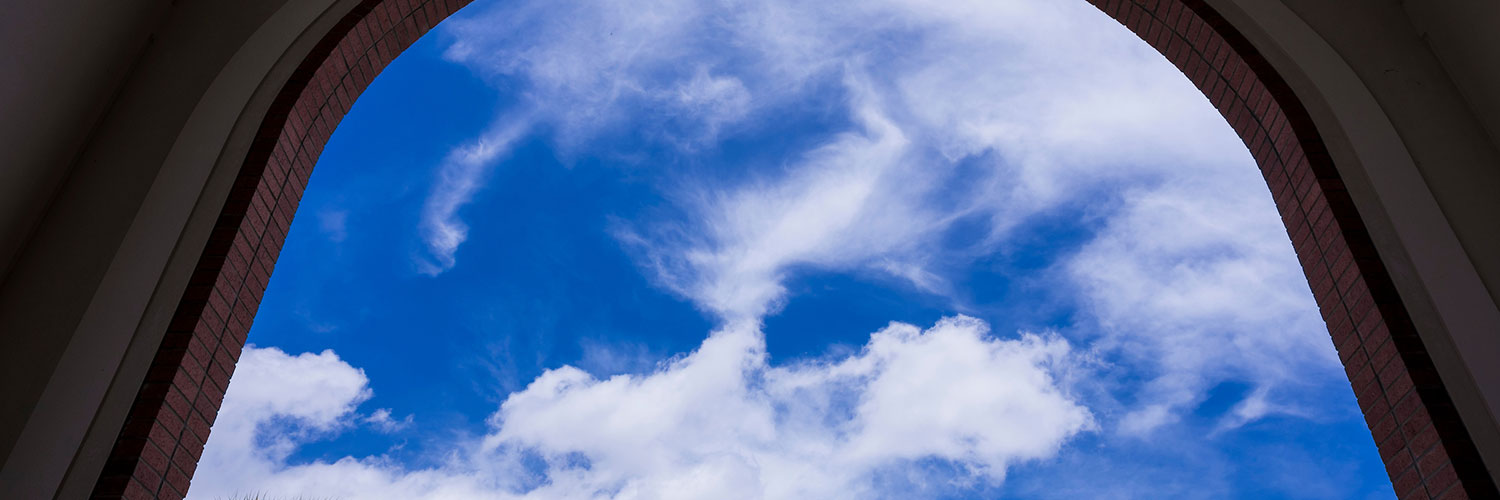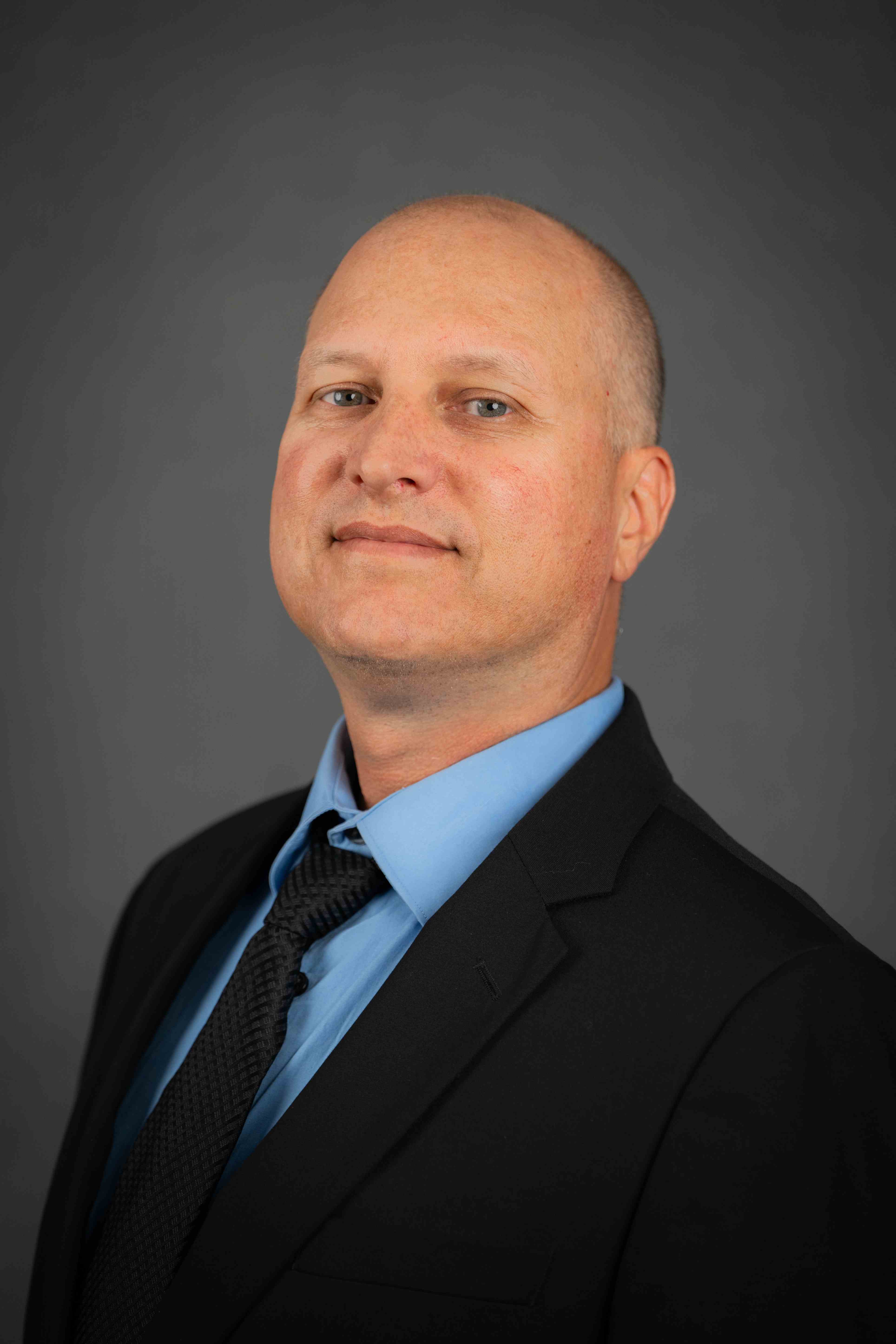
Robert J. Usselman

Robert J. Usselman
Assistant Professor | College of Engineering and Science: Chemistry and Chemical Engineering
Deputy Director, Computational Research At Florida Tech (CRAFT)
Contact Information
Expertise
Educational Background
2005 Ph.D. Bio-Physical Chemistry, Montana State University, Bozeman, MT
1999 B.A. in Chemistry (ACS-certified), Mathematics Minor Concordia College – Moorhead, MN
Professional Experience
2018-present Assistant Professor
Department of Chemistry and Chemical Engineering, Florida Institute of Technology, Melbourne, FL
2014-2018 Assistant Research Professor
Department of Chemistry and Biochemistry, Montana State University, Bozeman, MT
2010-2014 Senior Research Scientist
Magnetics Group, Electromagnetics Division, Physical Measurement Laboratory, NIST
2010-2014 Research Faculty
Professional Research Experience Program (PREP), University of Colorado – Boulder, CO
2008-2010
National Research Council (NRC) Postdoctoral Fellowship
Magnetics Group, Electromagnetics Division, Physical Measurement Laboratory, NIST
2006-2008 Postdoctoral Associate
University of Denver, University of Colorado Health Science Center, Denver, CO
Current Courses
CHM 1101, 1102
Analytical CHM Lab 3311, 3312
Selected Publications
26). Therapeutic Nuclear Magnetic Resonance and Intermittent Hypoxia Trigger Time Dependent On/Off Effects in Circadian Cocks and Confirm a Central Role of Superoxide in Cellular Magnetic Field Effects. Viktoria Thoeni, Elitsa Y Dimova, Thomas Kietzmann, Robert J Usselman, Margit Egg, Redox Biology 72 (2024).
25). Probing Magnetic Field Effects on Cellular Redox State using Autofluorescence Intensity and Lifetime Microscopy, Kevin K Tan, Carlos A Renteria, Rishyashring R Iyer, Alexander Ho, Janet E Sorrells, Robert J Usselman, Stephen A Boppart, Quantum Effects and Measurement Techniques in Biology and Biophotonics, SPIE (2024).
24). Quantitative Measurements of Reactive Oxygen Species (ROS) Partitioning in Electron Transfer Flavoenzyme Magnetic Field Sensing, Chase K. Austvold, Stephen M. Keable, Maria Procopio, and Robert J. Usselman, Frontiers Biophysics - Quantum-based Effects in Cell Physiology 15 (2024).
23). Magnetic Field Intervention Enhances Cellular Migration Rates in Biological Scaffolds, Amy M. Vecheck, Cameron M. McNamee, Renee Reijo Pera, and Robert J. Usselman, Bioengineering 11 (9), (2023).
22). Aging and Neuronal Death, Fang Fang, Robert J. Usselman, Renee Reijo-Pera, Aging 15 (23), (2023).
21). Blue-light Induced Accumulation of Reactive Oxygen Species is a Consequence of the Drosophila Cryptochrome Photocycle, Louis-David Arthaut, Nathalie Jourdan, Ali Mteyrek, Maria Procopio, Mohamed El-Esawi, Alain d’Harlingue, Pierre-Etienne Bouchet, Jacques Witczak, Thorsten Ritz, Andre Klarsfeld, Serge Birman, Ute Hoecker, Robert J. Usselman, Carlos F. Martino, and Margaret Ahmad, PLoS ONE 12(3): e0171836 (2017).
20). Electron Spin Relaxation and Biochemical Characterization of the Hydrogenase Maturase HydF: Insights into [2Fe-2S] and [4Fe-4S] Cluster Communication and Hydrogenase Activation, Eric Shepard, Priyanka Aggarwal, Amanda Byer, Jerimiah Betz, Anna Scott, Krista Shisler, Sandra Eaton, Gareth Eaton, Robert J. Usselman, and Joan Broaderick, Biochemistry 56 (25), 3234-3247 (2017).
19). The Quantum Biology of Reactive Oxygen Species Partitioning Impacts Cellular Bioenergetics, Robert J. Usselman, Christina Chavarriaga, Pablo Castello, Maria Procopio, Thorsten Ritz, Edward Dratz, David J. Singel, and Carlos Martino, Scientific Reports 6: 38543 (2016).
18). Monooxygenase Substrates Mimic Flavin to Catalyze Cofactorless Oxygenations, Melody M. Machovina, Robert J. Usselman, Jennifer L. DuBois, Journal of Biological Chemistry, jbc.M116.730051 (2016).
17). On-wafer Magnetic Resonance of Magnetite Nanoparticles, Charles E. Little, Stephen E. Russek, James C. Booth, Pavol Kabos, and Robert J. Usselman, Journal of Magnetism and Magnetic Materials 393, 15-19 (2015).
16). Temperature-dependent Structure of Tb-doped Magnetite Nanoparticles, Katherine Rice, Stephen E. Russek, Roy Geiss, Justin M. Shaw, Robert J. Usselman, Eric R. Evart, Tom J. Silva, Hans T. Nembach, and Yves Idzerda, Applied Physics Letters 106 (6), 062409 (2015).
15). Gadolinium-Loaded Viral Capsids as Magnetic Resonance Imaging Contrast Agents, Robert J. Usselman, Shefah Qazi, Priyanka Aggarwal, Sandra Eaton, Gareth Eaton, Trevor Douglas, and Stephen Russek, Applied Magnetic Resonance 46 (3), 349-355 (2015).
14). Dynamics of Magnetic Nanoparticles and Nanodevices, Stephen Russek, Robert J. Usselman, and Eric R. Evarts, Handbood of Nanomagnetism: Applications and Tools, CRC Press, Chapter 6, 117-173 (2015).
13). Inhibition of Cellular Proliferation and Enhancement of Hydrogen Peroxide Production in Fibrosarcoma Cell Line by Weak Radio Frequency Magnetic Fields, Pablo Castello, Lucas Portilli, Frank Barnes, Robert J. Usselman, and Carlos Martino, Bioelectromagnetics 35 (8), 598-602 (2014).
12). Spin Biochemistry Modulates Reactive Oxygen Species (ROS) Production by Radio Frequency Magnetic Fields, Robert J. Usselman, Iain Hill, David Singel, and Carlos Martino, PLoS ONE 9(3), e93065 (2014).
11). Manganese (III) Porphyrins Complexed with P22 Virus-like Particles as T1-enhanced Contrast Agents for Magnetic Resonance Imaging (MRI), Shefah, Qazi, Masaki Uchida, Robert J. Usselman, and Trevor Douglas, Journal of Inorganic Biochemistry February 19 (2), 237-246 (2014).
10). Temperature Dependence of Electron Magnetic Resonance Spectra of Iron Oxide Nanoparticles Mineralized in Listeria Innocua Protein Cages, Robert J. Usselman, Stephen E. Russek, Michael Klem, Mark Allen, Trevor Douglas, Mark Young, Yves Idzerda, and David Singel, Journal of Applied Physics 112, 084701 (2012).
9). Citrate Mediated Wet Chemical Synthesis of Fe Doped Nanoapatites: A Model for Singly Doped Multi-function Nanostructures, Rajendra K. Kasinath, Michael T. Klem, and Robert J. Usselman, (2012) in Supplemental Proceedings: Materials Properties, Characterization, and Modeling, Volume 2 (ed TMS) John Wiley and Sons, Inc., Hoboken, NJ, USA.
8). Monitoring Structural Transitions in Icosahedral Virus Protein Cages by Site-Directed Spin Labeling, Robert J. Usselman, Eric D. Walter, Debbie Willits, Trevor Douglas, Mark Young, and David J. Singel, Journal of American Chemical Society, 133 (12), 4156-4159 (2011).
7). End-Group Distributions of Multiple Generations of Spin-Labeled PAMAM Dendrimers, Karl B. Sebby, Eric D. Walter, Robert J. Usselman, Mary J. Cloninger, and David J. Singel, Journal of Physical Chemistry B, 115 (16), 4613-4620 (2011).
6). Two-Component Magnetic Structure of Iron Oxide Nanoparticles Mineralized in Listeria Innocua Protein Cages, Robert J. Usselman, Michael Klem, Trevor Douglas, Mark Young, Steve Russek, and Ron Goldfarb, Journal of Applied Physics 107 (11), 114702 (2010).
5). The Iron-Sulfur Cluster of Electron Transfer Flavoprotein-Ubiquinone Oxidoreductase is the Electron Acceptor for Electron Transfer Flavoprotein, Michael Swanson, Robert J. Usselman, Frank E. Frerman, Gareth R. Eaton, and Sandra S. Eaton, Biochemistry. 47 (34), 8894-901 (2008).
4). Impact of Mutations on Redox Potentials, g-Values, and Spin-Lattice Relaxation Rates of the [4Fe-4S]2+,1+ Cluster in ETF-QO, Robert J. Usselman, Alistair Fielding, Frank E. Frerman, Nick Watmough, Gareth R. Eaton, and Sandra S. Eaton, Biochemistry. 47 (1), 92-100 (2008).
3). Electron Paramagnetic Resonance Characterization and Interspin Distance Measurement of Electron Transfer Flavoprotein‑ubiquinone Oxidoreductase (ETF-QO), Alistair J. Fielding, Robert J. Usselman, Frank E. Frerman, Gareth R. Eaton and Sandra S. Eaton, Journal of Magnetic Resonance 190 (2), 222-32 (2008).
2). Characterization of Heterogeneously Functionalized Dendrimers by Mass Spectrometry and EPR Spectroscopy, Eric D. Walter, Karl B. Sebby, Robert J. Usselman, David J. Singel, and Mary J. Cloninger, J. Phys. Chem. B; 109 (46), 21532 – 21538 (2005).
1). Electron Magnetic Resonance of Iron Oxide Nanoparticles Mineralized in Protein Cages, Robert J. Usselman, Michael T. Klem, Mark Allen, Eric D. Walter, Keith Gilmore, Trevor Douglas, Mark Young, Yves Idzerda, David J. Singel, Journal of Applied Physics; 97, 10M523 (2005).
Recognition & Awards
2015 - American Heart Association Scientific Development Grant
2008 - National Research Council (NRC) Postdoctoral Fellowship NIST-Boulder
2001 - National Science Foundation Integrative Graduate Education and Research Traineeship (NSF-IGERT) Montana State University
2004 - Student Travel Award, 27th International EPR Symposium, Denver
1999 - Graduated with Chemistry Honors, Concordia College
1998 - Ough Family Scholarship in Mathematics, Concordia College
Research
The Usselman research lab is always welcoming eager, inquisitive, and motivated undergraduate and graduate students to join our multidisciplinary research team to study front-edge science. Please email Prof. Usselman for inquiries about the many research opportunities.
The overarching theme of the Usselman research program is to use advanced magnetic resonance and optical microscopy techniques to address bio-physical chemistry problems in the areas of chemical biology, biomaterials, and redox biochemistry. We aim to develop novel methodologies and instrumentation that address the fundamental gap in knowledge between physical measurements and theoretical models for bio-engineered systems operating at the quantum/classical interface. We seek to understand how quantum properties play governing roles in biological function and apply theory-driven predictions of quantum biology for multi-scale integration of cellular function.

 Give to Florida Tech
Give to Florida Tech